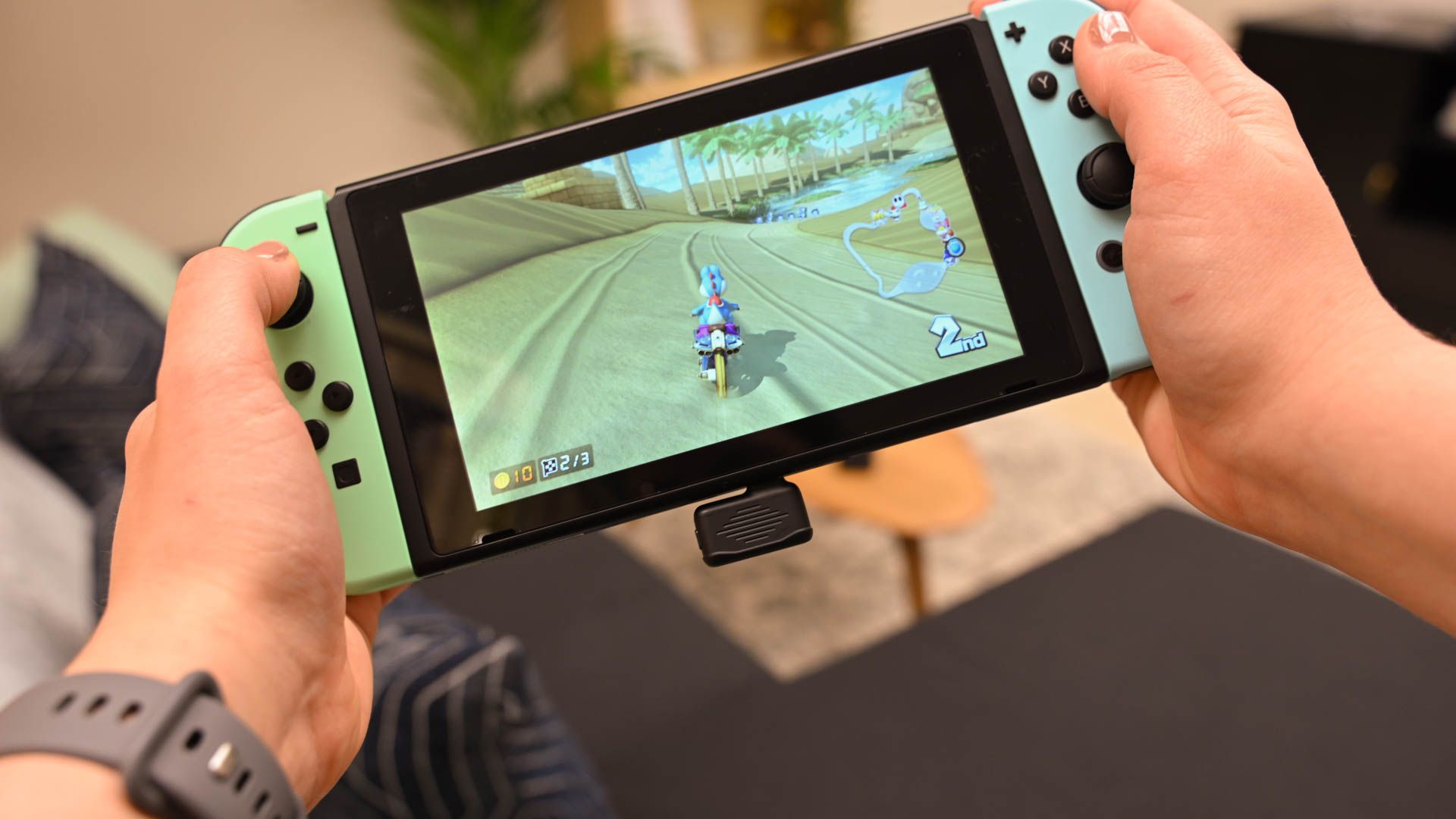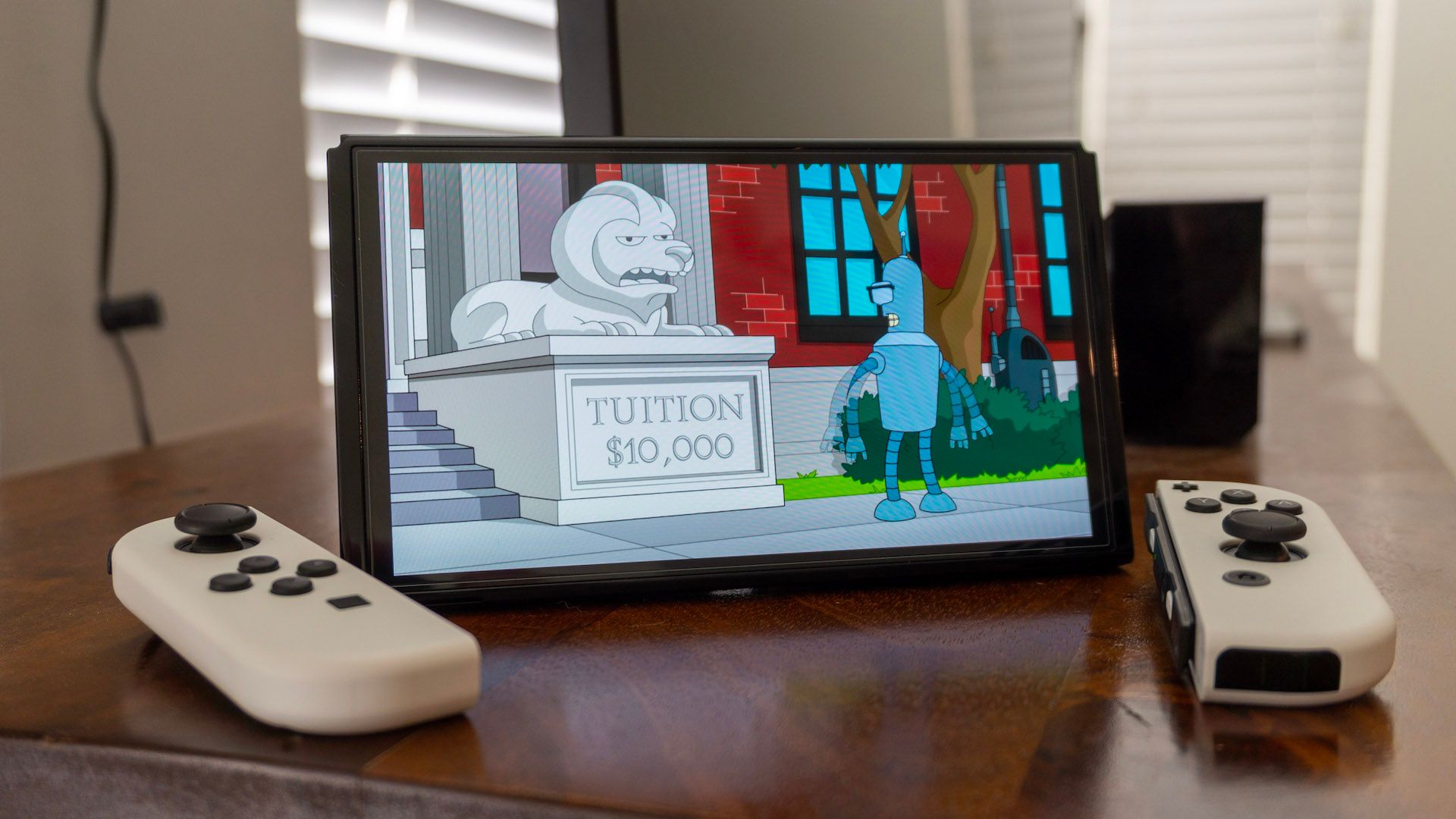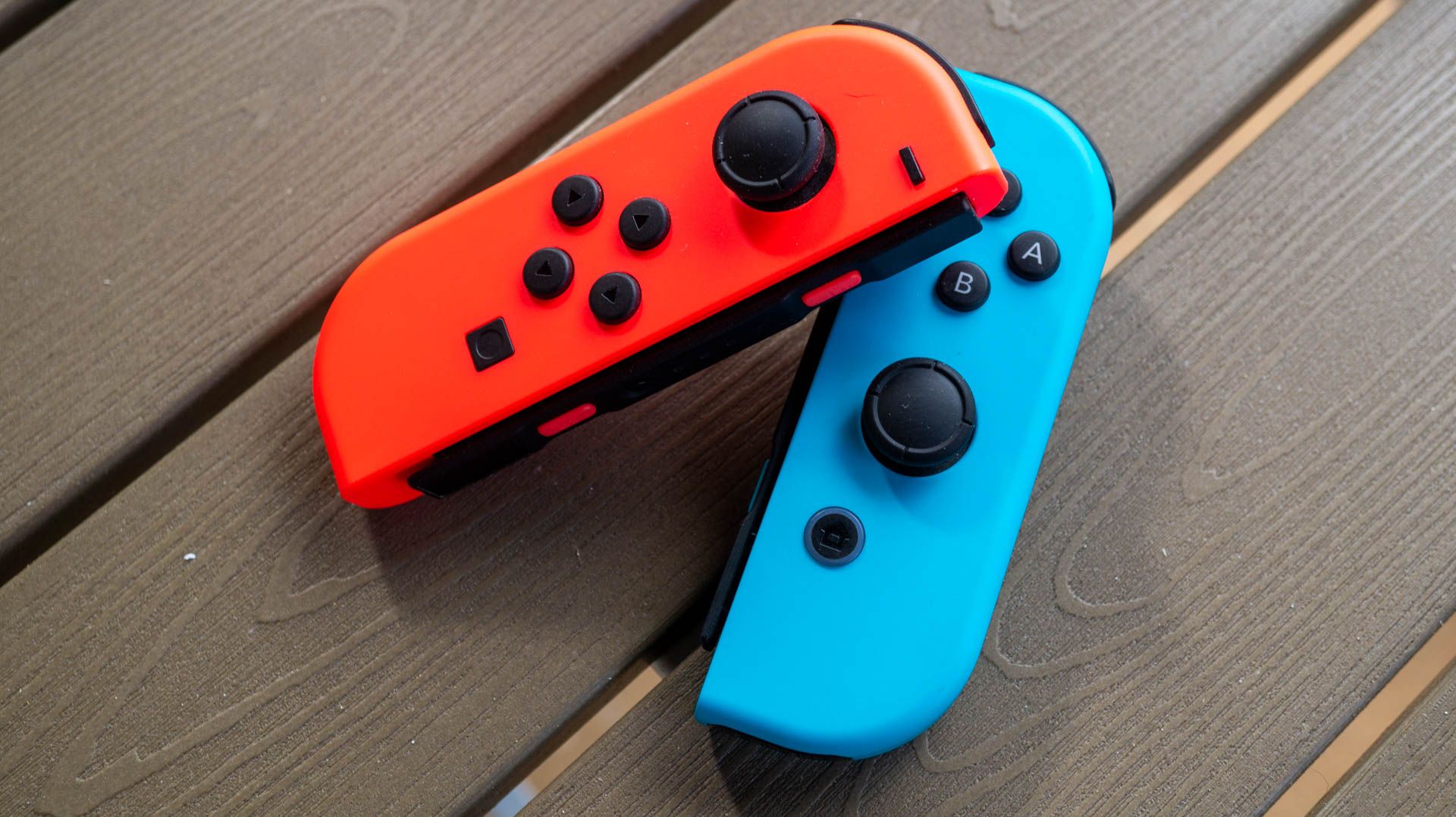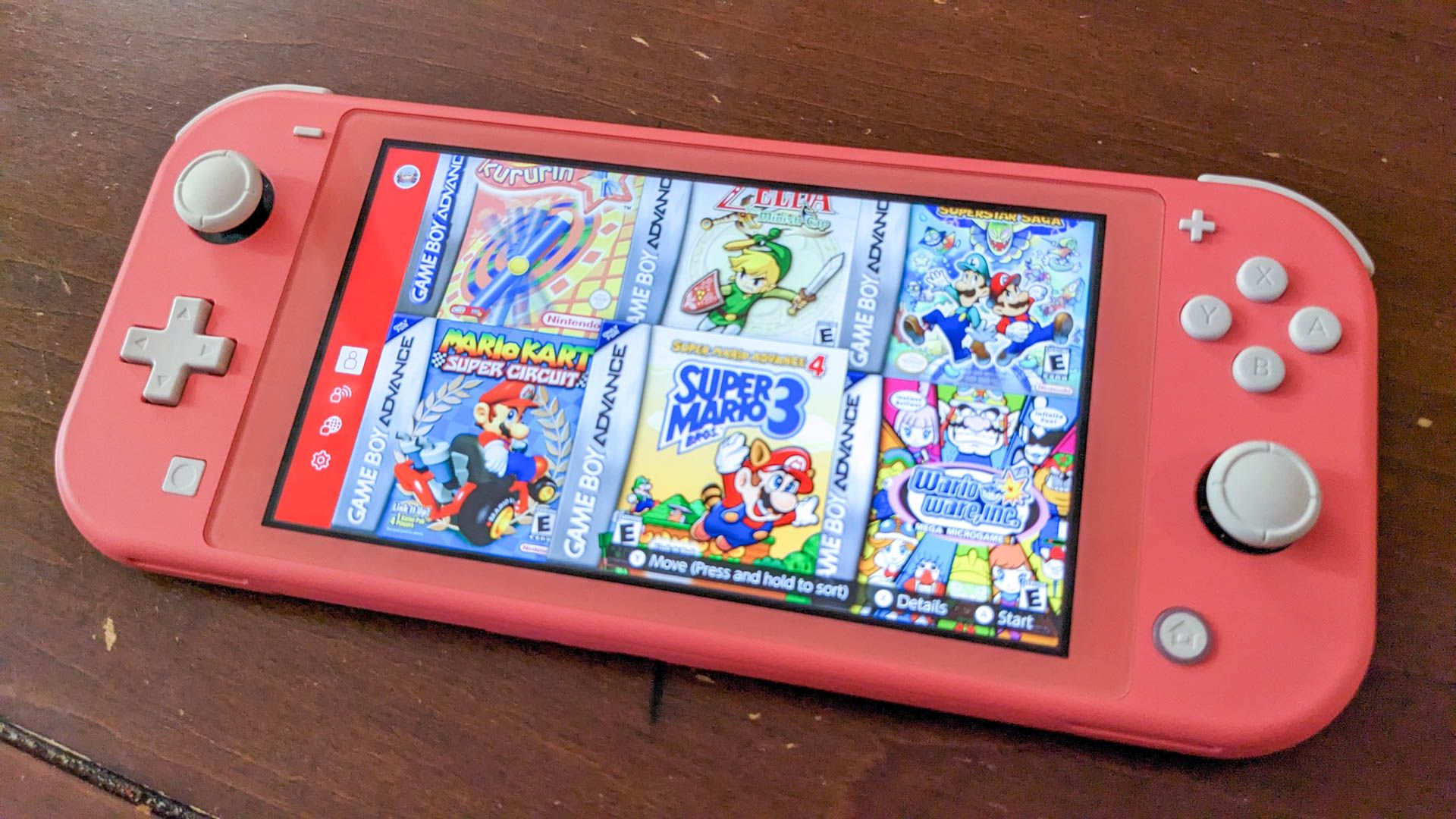Quick Links
Key Takeaways
The original Switch offers an all-round hybrid experience. The Switch Lite is only playable in handheld mode, is smaller, but loses out when it comes to some experiences. The Switch OLED is a premium model that can do everything the base model can with a better screen, more storage, and an improved dock.
The Nintendo Switch is one of the best-selling game consoles of all time. Its success has seen the platform flooded with titles, from first-party Nintendo bangers to indie darlings. The Switch is clearly a solid investment, even for the casual gamer---but which Switch should you go for?
Original Nintendo Switch: A Great All-Rounder ($299)
The original Nintendo Switch design has proved itself to be popular as an all-rounder that embraces the console's hybrid nature. In the box, you'll find a Switch console, two detachable Joy-Con controllers, a dock, a charger, and an adapter for turning the Joy-Con controllers into a more traditional joypad.
This package allows you to use the Switch in both handheld and docked modes, either on the go or while connected to a TV. Though the chip used in the Switch has had a minor update since the original launched in 2017, performance hasn't improved significantly (though later Switch models get slightly better battery life at 4.5 to 9 hours, depending on the title).
The original Switch uses a 6.2-inch LCD screen that runs at a resolution of 720p. It looks good when played in handheld mode, though the shiny outer plastic can be a bit reflective in especially bright conditions. Detachable Joy-Cons mean that the original Switch is compatible with games like Switch Sports, Ring Fit Adventure and Just Dance out of the box.
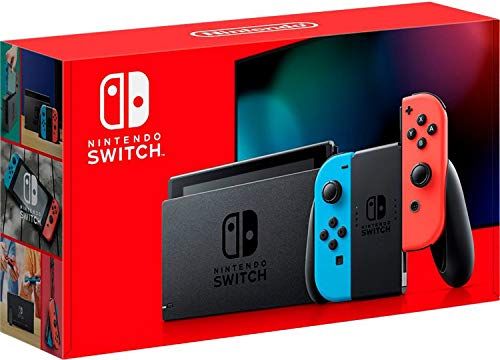
nintendo switch
The (upgraded) original Nintendo Switch is an all-rounder that can be played in handheld and docked mode.
It's a solid choice if you see yourself playing games both on your TV and in handheld mode. It's also the Switch to buy if you're mostly a TV gamer who doesn't like playing games in handheld mode. There have been bundles that feature different colored Joy-Con in the box, though you'll likely be choosing between neon red and blue, and standard grey.
In terms of accessories, you'll find that the vast majority of cases and grips target the original Switch form factor. You may have an easier time finding accessories, and you may pay a little less. The console includes 32GB of internal memory, expandable with a microSD memory card (don't waste your money on fast memory cards for your Switch).
Nintendo Switch Lite: A Purely Portable Affair ($199)
The Nintendo Switch Lite is a portable version of the Switch that cannot be played in docked mode. The Switch Lite doesn't feature detachable Joy-Cons, nor does it include a dock in the box (only a charger). Since the Joy-Cons are fused to the main console body, the Switch Lite feels more rigid than its hybrid siblings.
This version of the console is smaller than the original, featuring only a 5.5-inch LCD and a smaller internal battery. Unsurprisingly (and disappointingly), this means that the Switch Lite has the worst battery life of all three available models at between 3 to 7 hours (but is still better than the original 2017 model).
Expect the same performance as the other models, but keep in mind that the lack of detachable Joy-Cons mean you won't be able to enjoy some titles (like Switch Sports and Ring Fit Adventure) out of the box. The Switch Lite can still make use of external Joy-Cons, but you'll be limited to the smaller screen.
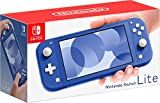
nintendo switch lite
Save money on the Nintendo Switch by opting for the handheld model. Smaller than the standard model, the Switch Lite lacks detachable Joy-Con and can't be used in docked mode but offers great value.
If you're purely buying a Switch to play on the go and you'd like to save some money, the Switch Lite is a good choice. The small size may make the console unsuitable for those with larger hands (not to mention anyone who wants to play in docked mode), but the cheap price point and petite nature might make it especially well-suited to children.
The success of the Switch platform means that you should still be able to find plenty of accessories for your Switch Lite, including cases and grips. You won't however be able to use aftermarket Joy-Con replacements like the Hori Split Pad Pro. You'll find the Switch Lite in a range of solid colors not available in other models.
Like the original model, the Switch Lite includes 32GB of memory inside the unit with a slot you can use to expand storage with a microSD card.
Nintendo Switch OLED: A Premium Hybrid Experience ($349)
For an extra $50 on top of the price of a standard Switch, you can have the Nintendo Switch OLED---a premium device that does everything the standard model does. That means it's got detachable Joy-Cons and a dock for playing on the TV while sporting a few enhancements over the base model.
The standout feature here is the OLED display, which delivers better image quality compared to the LCD panels found in the other models. OLED technology is self-emissive, which means that pixels can be "turned off" to deliver inky blacks. OLED displays have better contrast ratios than LCDs, and the added brightness means better performance in bright conditions.
The Switch OLED display measures 7 inches and features thinner bezels than the standard model. It's rated for the same 4.5 to 9 hours of battery life as the standard model, though tests have shown it to last a bit longer. Nintendo also improved the stand found on the back of the unit, with the OLED model featuring a much wider, sturdier, and adjustable stand for tabletop play.
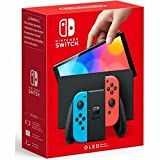
Nintendo Switch OLED
The premium Nintendo Switch experience features a brighter and more colorful OLED display that offers better contrast, twice the internal storage, better speakers, and a dock with a built-in Ethernet port.
There are further improvements in the dock, which now features a wired LAN port (you can add wired LAN to a standard Switch dock with a USB to Ethernet adapter). On top of this, the Switch OLED doubles the internal storage of the base model to 64GB and includes better sound quality on account of larger speakers.
For its benefits, the Switch OLED is marginally wider (by about 3mm) and a touch heavier (at 11.29oz or 320g), in addition to costing slightly more. Despite this, it's the best Nintendo Switch experience you can have especially if you play intend to use the console in handheld mode.
The Nintendo Switch OLED model is limited to neon blue and red or white Joy-Cons in the box (with a matching dock), though later special editions of the console (including Splatoon 3 and The Legend of Zelda: Tears of the Kingdom) have also been OLED models.
Trouble Narrowing It Down?
Still not sure which Switch model to pick? Here are some head-to-head comparisons to help you decide.
Switch OLED vs. Switch
The Switch OLED offers a premium experience for a relatively reasonable extra $50. Not only do you get double the internal storage, but you also get a far better display with higher brightness and an improved contrast ratio. If you have trouble with Wi-Fi, you'll also appreciate the wired LAN port on the dock. It's arguably worth it if you're going to be playing in handheld mode, plus you might be able to get some of the expense back by opting for a smaller (and cheaper) memory card.
But the original Switch is still a good buy. If you see yourself rarely using the Switch in portable but still don't want to be locked out of detachable Joy-Con experiences like Just Dance, the original Switch might be the way to go. If money is tight and it's already a stretch for you to justify the leap from Switch Lite (at $199) to standard Switch, the OLED might seem a bit too pricey.
Switch vs. Switch Lite
You shouldn't buy a Switch Lite if you have aspirations of using your Switch in docked mode. You should also avoid the Lite console if you want to be able to detach your Joy-Con to play games like Ring Fit Adventure. If you have large hands, the Switch Lite is a poor choice since it's the smallest console of the lot.
The Switch affords a lot more flexibility in how you use your console. It's also more expensive. If you have no interest in using motion controls in titles like Switch Sports, you might be happy with a purely handheld experience. Just make sure you're aware of the limitations of the Lite before you buy. If you're worried about stick drift, the Switch Lite might also be worth thinking twice about since the Joy-Cons cannot be replaced unless you're happy to make a warranty (or repair) request or open your console up.
Switch OLED vs. Switch Lite
Price and overall console size are your main considerations if you're trying to decide between a Switch Lite and Switch OLED. The OLED model arguably provides a better handheld experience owing to a larger and better-quality screen. There's no beating an OLED display, and the added brightness should make the console easier to use in well-lit environments.
That said, the OLED is a much larger console. It's less portable, and it's more expensive. The price difference is $150, but you do get a dock and fully detachable Joy-Cons if you opt for the OLED model. For a richer experience, go for the OLED. For a pocket-friendly budget option, there's always the Switch Lite.
Enhance Your Switch Experience
Hopefully, you now have some idea of where to spend your money. On top of your console, you'll need to grab some of the best Switch games (and check out some of the Switch eShop's best free games too).
The success of the Switch means there's plenty more to spend your money on. Check out our favorite Switch accessories to make the most of your console experience.

